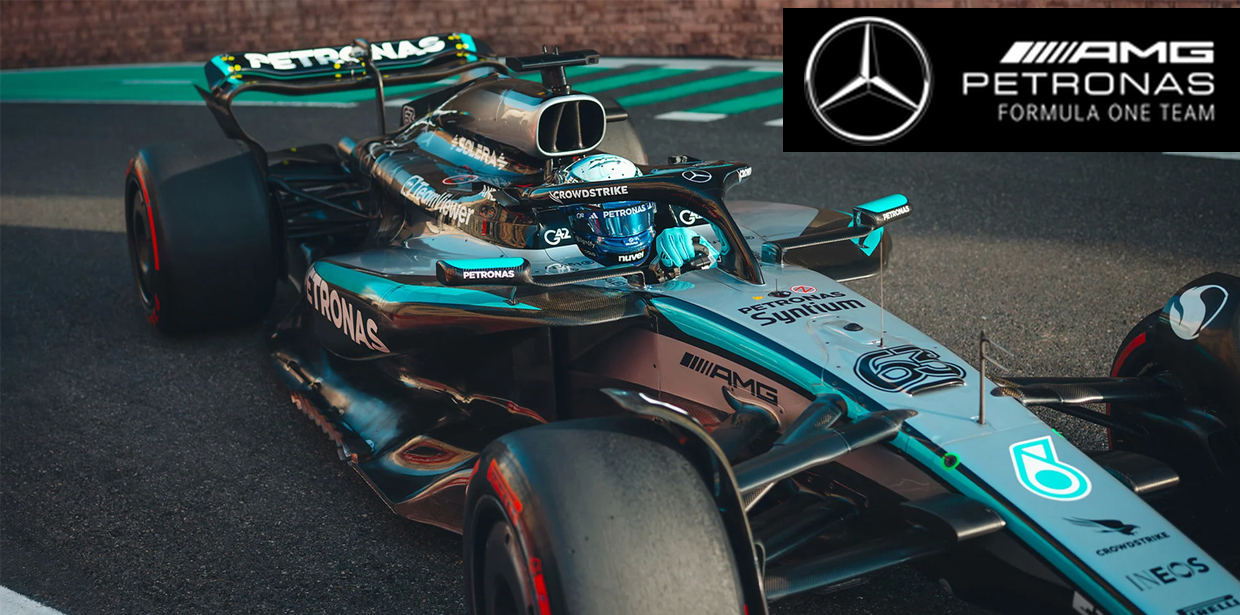Mercedes W16 Showcases First Bio-Based Carbon Fibre Composite in Race Conditions
BY Composights
Published: 12 Oct 2025
At the Azerbaijan Grand Prix, the Mercedes W16 made history by running a bio-based carbon fibre composite on its rear brake duct wheel
shields, the first time sustainable
composites have been used on a technically demanding component under race
conditions.
Developed in collaboration with Syensqo, the innovative resin contains bio-based materials derived
from biodiesel by-products, proving that high-performance engineering and
sustainability can go hand in hand. The project underscores Mercedes
commitment to reducing its environmental footprint while maintaining
uncompromising performance standards, signaling a major step toward the future
of sustainable motorsport materials.
The rear brake duct
wheel shields on George s W16 which crossed the line P2 in Baku - were
developed using a new resin that includes 30% bio-based materials.
The groundbreaking development highlights how Formula One can lead the way in the
application of sustainable materials without compromising on quality or
performance.
Applying these materials to the rear brake duct wheel
shields, with their intricate aerodynamic surfaces, demonstrates the technology
can withstand the extreme conditions of Formula One racing, and its potential
for widespread adoption across the sport.
Head of
Sustainability Alice Ashpitel said: We are proud to be powering
sustainable innovation within Formula One, introducing sustainable carbon fibre
composites on a technically performant component. This project with Syensqo
highlights our commitment to reduce our environmental impact while maintaining
the highest standards of performance. By integrating bio-based resin within a
carbon fibre composite material, we are setting a new benchmark for the future
of motorsport and beyond.
The fact that these materials have been derived from
by-products associated with the creation of bio-diesel is an added benefit and
indicates the power of advanced sustainable fuels."
Material innovation is a key step to meet our goal of achieving Net Zero across all scopes by 2040. The development of this bio-based material application has been made possible through close collaboration with Syensqo.

Rodrigo Elizondo, President of Syensqo Composite Materials added: We are pleased to see our project with Mercedes come to life on the W16 race car. Our bio-based resin technology represents a significant step forward in sustainable materials innovation. By replacing traditional petroleum-based components with those derived from renewable sources, we are not only introducing circularity in our product design but also paving the way for future innovations. We are very pleased to see this material applied in such a high-performing environment, showcasing its potential for broader applications."
Toto said: In an era where innovation drives performance and shapes industry futures, the pursuit of smarter, faster, and more efficient technologies has become a defining challenge of our time.
This project not only reflects our commitment to sustainability but also highlights the role of Formula One as a test bed for pioneering technologies that can benefit a range of industries. Our sport is the world s fastest test lab, and these innovations represent our relentless pursuit of performance and appetite to contribute beyond the grid.









